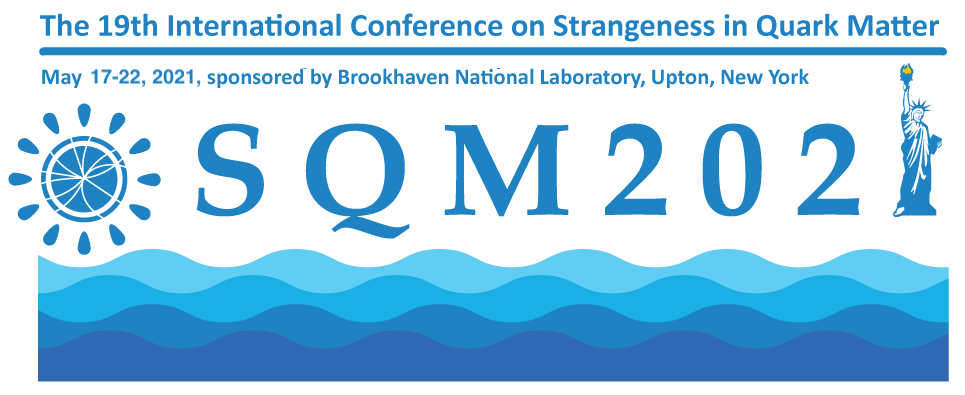Speaker
Description
The hot and dense medium produced in relativistic heavy-ion collisions has been conjectured to be accompanied by an axial charge asymmetry that may lead to a separation of electric charges in the direction of the extremely strong ($10^{18}$ Gauss) magnetic field ($B$),also known as the Chiral Magnetic Effect (CME). The measurement of azimuthal correlator ($\Delta\gamma$) with respect to the spectator plane [1], estimated by the zero degree calorimeters with shower maximum detector, and the participant plane, estimated by the 2nd harmonic event plane determined using charged particles reconstructed by time projection chamber, will give us an opportunity to measure the possible CME fraction beyond the flow background. Preliminary results using this approach in Au+Au collisions at $\sqrt{s_{\rm{NN}}}$ = 200 GeV and U+U at $\sqrt{s_{\rm{NN}}}$ = 193 GeV have been presented at Quark Matter 2019 [2]. In this talk, I will present the final results where the systematic uncertainties have been thoroughly investigated. Meanwhile, the observability of CME has been conjectured to be dependent on $\sqrt{s_{\rm{NN}}}$ due to changes in the lifetime of the magnetic field, the strengths of CME signal and non-CME background. At lower energies, the Event Plane Detector (EPD) installed in the year 2018 provides a unique capability for CME search. The EPD can measure the event plane associated with the spectators with good precision. This opens up new opportunities to revisit CME search at lower energies with the BES-II data recently collected by STAR. In this presentation, I’ll present the CME search at STAR using the EPD and present the first measurements in Au+Au collisions at $\sqrt{s_{\rm{NN}}}$ = 27 GeV and discuss STAR’s plan for blind analysis of the isobar data as outlined in Ref. [3].
References
[1] H.-J. Xu, J. Zhao, X.-B. Wang, H.-L. Li, Z.-W. Lin, C.-W. Shen, and F.-Q. Wang. Varying the chiral magnetic effect relative to flow in a single nucleus-nucleus collision. Chinese Physics C, 42(8):084103, jul 2018.
[2] J. Zhao. Search for CME in U+U and Au+Au collisions in STAR with different approaches of handling backgrounds. Nuclear Physics A, 1005:121766, 2021. The 28th International Conference on Ultra-relativistic Nucleus-Nucleus Collisions: Quark Matter 2019.
[3] J. Adam and others, STAR collaboration. Methods for a blind analysis of isobar data collected by the star collaboration. arXiv:1911.00596, 2019.
| Collaboration | STAR Collaboration |
|---|




